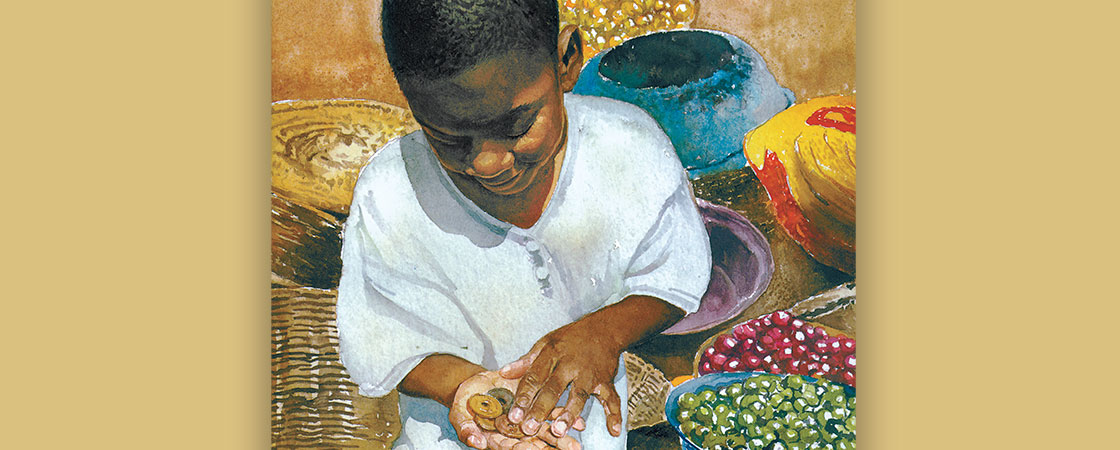A few days later I grew confident enough to try to ride a loaded bicycle. With Murete’s help, I strapped a giant pumpkin on the carrier behind me. When I attempted to pedal, the bicycle wobbled so dangerously that Murete, alongside me, had to grab it.
“All right, Saruni, the load is too heavy for you,” he said, and I got off. Mounting the bicycle to ride back to the house, he sighed wearily. “And hard on my bones, which are getting too old for pedaling.”
I practiced daily with smaller loads, and slowly I learned to ride a loaded bicycle. No more pushing the squeaky old wheelbarrow, I thought. I would ride with my load tall and proud on my bicycle—just like Murete!
On the first Saturday after school opened in July, we went to market as usual. Late in the afternoon, after selling all we had, Yeyo sat talking with another trader.
I set off into the crowd. I wore an old coat Murete had handed down to me for chilly July days like today. My precious coins were wrapped in various bundles inside the oversize pockets of the coat.
I must be the richest boy in the world, I thought, feeling like a king. I can buy anything.
The tall skinny man was polishing his bicycles as I came up. “I want to buy a bicycle,” I said, and brought out my bundles of coins.
The man whistled in wonder as I unwrapped the money carefully on his table. “How many coins have you got there?”
Proudly, I told him. “Three hundred and five.”
“Three hundred and . . . five,” he muttered. “Mmh, that’s . . . thirty shillings and fifty cents.” He exploded with laughter. “A whole bicycle . . . for thirty shillings . . . and fifty cents?”
His laugh followed me as I walked away with my bundles of coins, deeply disappointed.
On our way home, Yeyo asked what was wrong.
I had to tell her everything.
“You saved all your money for a bicycle to help me?” she asked. I could tell she was amazed and touched. “How nice of you!” As for the tall skinny man, she scoffed, “Oi! What does he know? Of course you will buy a bicycle. One day you will.”
Her kind words did not cheer me.

